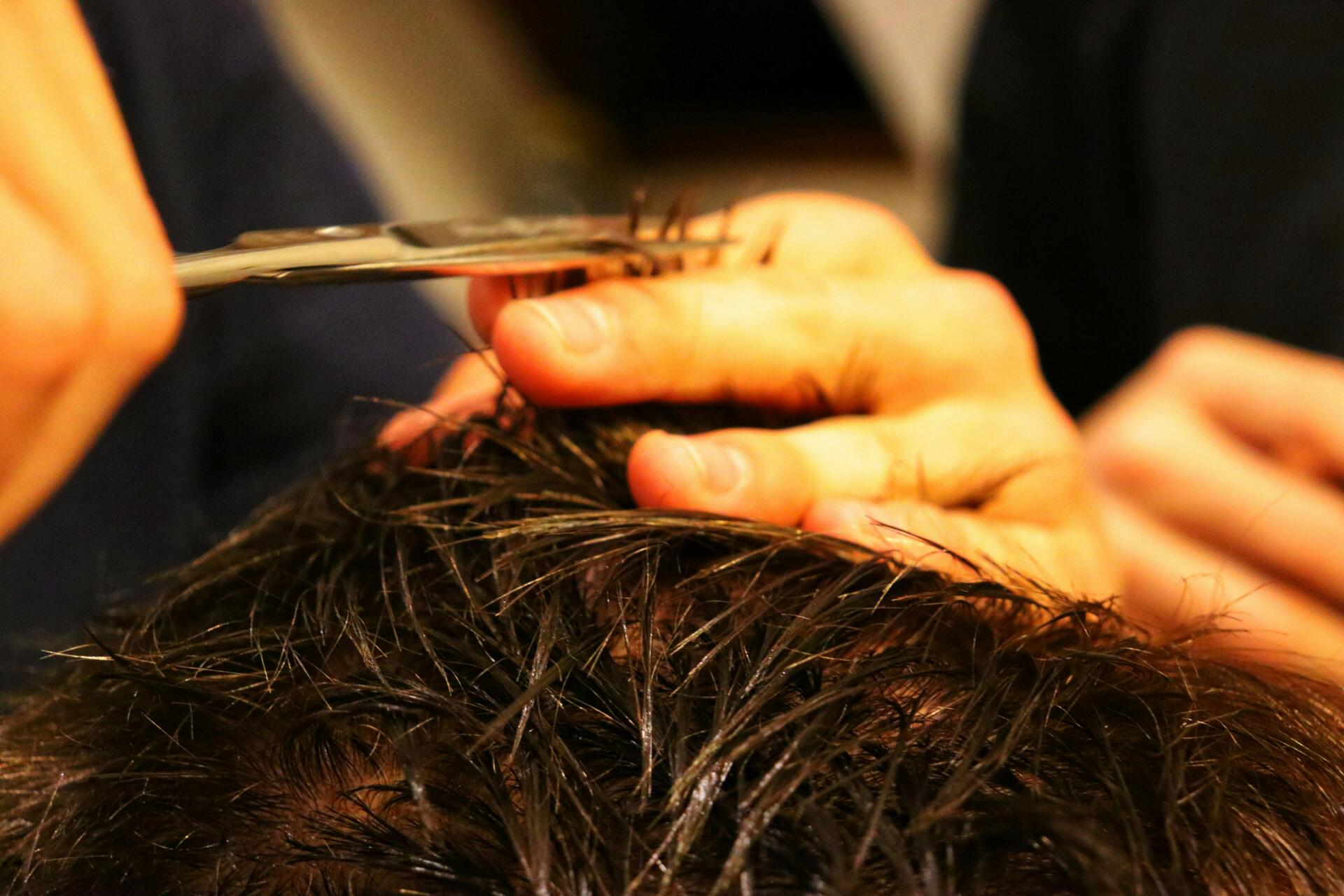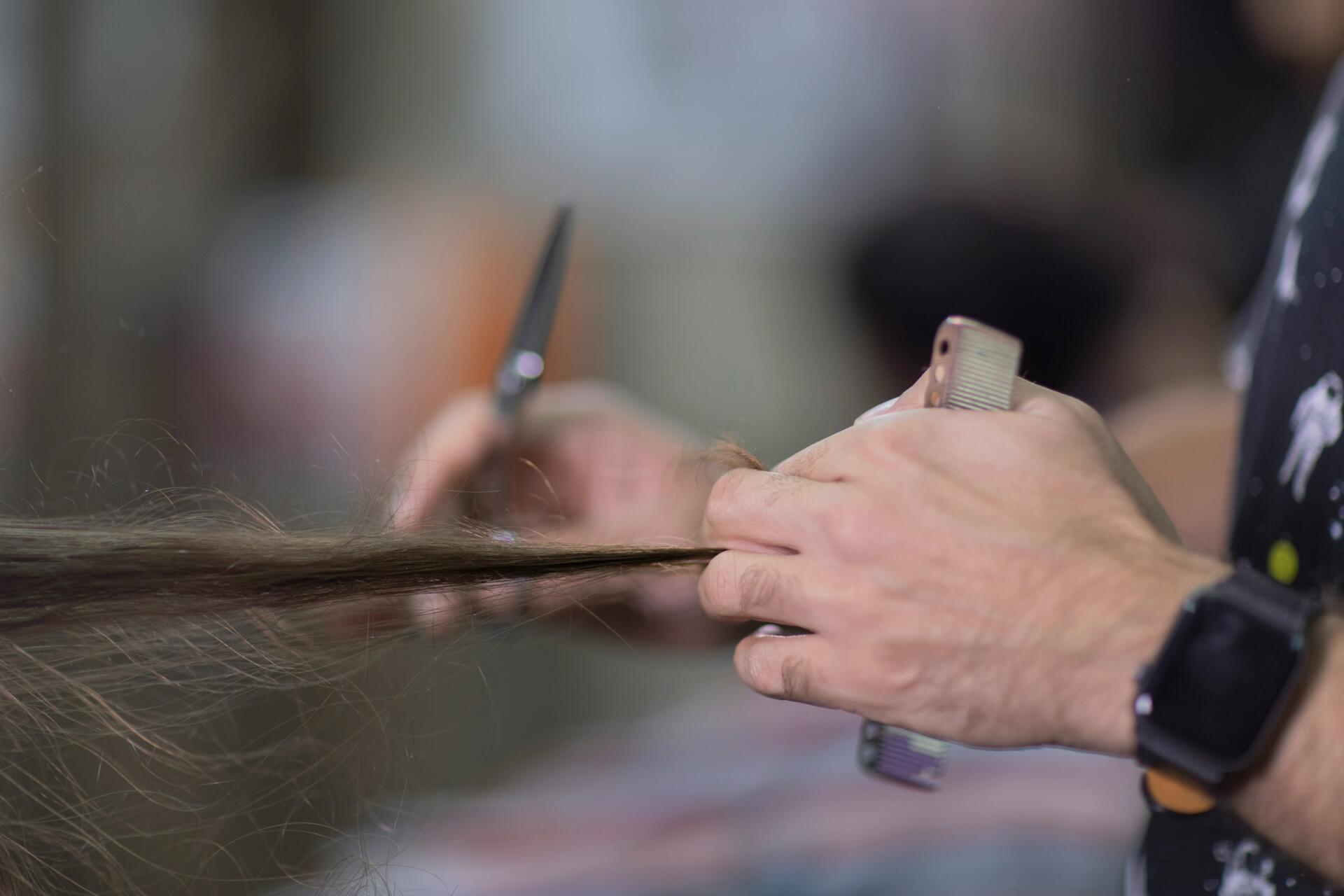FREE NZ DELIVERY FOR ORDERS OVER $75
How Often Should You Cut Your Hair?
Let’s be honest, cutting your hair can feel a bit counterintuitive, especially if you're trying to grow it out. You've spent months (maybe years) getting it past your shoulders, and the idea of trimming even a centimetre feels like sabotage.
But truth is, regular trims don’t set you back, they help you move forward.
It’s one of the most misunderstood parts of a healthy hair routine. Whether you're rocking a short, sharp bob, growing out past the mid-back zone, or just trying to keep your ends in check, knowing when and why to cut your hair can make all the difference.
We're gonna break down the common myths, explain what’s really going on when your stylist says “just a trim,” and help you figure out a haircut schedule that actually suits your hair type, goals, and lifestyle.
Let’s clear things up once and for all.

Common Myths About Cutting Your Hair
There’s no shortage of hair advice floating around - some helpful, some… not so much. When it comes to cutting your hair, these myths are especially persistent:
“Cutting your hair makes it grow faster.”
We’ve all heard this one. But here’s the truth: hair grows from your scalp, not your ends - so trimming it doesn’t physically speed up growth.
That said, regular trims can help you reach your length goals by preventing breakage.
Split ends left unchecked can snap off, making your hair appear like it’s stopped growing or even shrinking in length. Trimming away those weak, damaged ends keeps your hair looking and feeling stronger so it can grow out healthier, with less breakage holding it back.
“You don’t need to cut your hair if you don’t use heat.”
Sure, skipping the straightener helps reduce damage - but it’s not a free pass to avoid trims forever.
Hair still goes through daily stress, whether you style it or not. Brushing, sleeping, putting it in ponytails, exposure to sun and wind, swimming, towel-drying - these can all weaken your strands over time. It's a topic we've covered before: you always need protection, even when air-drying your hair!
Plus, even the most low-maintenance hair needs a freshen-up now and then to stay in top shape!
“Split ends aren’t a big deal.”
They might seem harmless at first, but split ends aren’t just a surface-level issue.
What causes split ends? Heaps: the way you brush and style your hair, a lack of moisture, chemical treatments, even your diet. But one thing's for sure, you can't ignore them. Once the end of a hair strand splits, it can continue to unravel up the shaft, weakening the structure of the hair and leading to more frizz, tangling, and breakage.
Unfortunately, no product can truly seal a split end long term - it needs to be snipped off. The longer you leave them, the more you risk having to take off more length later.
“Dusting your ends is enough - always.”
Dusting (lightly trimming just the very tips) can be a great way to maintain your length between bigger chops. But if your hair feels dry, rough, or is prone to snapping when brushed, it could need more than a tiny tidy.
Sometimes a slightly deeper trim is what’s needed to restore softness, bounce, and manageability. It’s all about listening to your hair and giving it what it needs - even if that’s a few extra centimetres.

Why Regular Trims Actually Help Your Hair
It might seem like cutting your hair is all about the look, but it’s just as much about the health.
Regular trims are like a reset button for your strands, helping you stay ahead of damage and giving your hair the best chance to thrive.
1. They keep damage under control
Even if your hair feels healthy now, it won’t stay that way forever without a little maintenance.
Everyday life - like brushing, styling, weather, and even friction from clothes - causes small cracks and stress on the hair fibre. Trimming removes the oldest, most fragile parts of the hair before that damage travels higher and causes more issues.
2. They make your hair look and feel better
Split ends don’t just cause breakage- they also leave hair looking rough, frizzy, and dull.
A regular trim instantly restores smoothness and shape, making your hair feel softer and behave better. It’s the fastest way to breathe new life into your style without a drastic change.
3. They support hair growth goals
We get it - when you're growing your hair, you want every centimetre to count. But skipping trims can be counterproductive.
Split ends that snap off leave you with uneven, brittle ends that can make it feel like your hair isn’t growing at all. Trimming a little, regularly, is much better than waiting too long and having to take off heaps later.
4. They help maintain your haircut or style
Whether you’re rocking a sharp bob, long layers, curtain bangs, or a blunt fringe, all cuts lose shape over time. Regular trims keep your style looking polished and intentional, not overgrown or unkempt.

So... How Often Should You Cut Your Hair?
There’s no one-size-fits-all schedule, but here’s a general guide to help you figure out what your hair might need.
If you're maintaining a style: every 4–6 weeks
Precision cuts like bobs, fringes, pixies or short layers tend to grow out fast and lose shape quickly. A trim every 4–6 weeks keeps your cut looking fresh, clean and intentional, rather than shaggy or uneven.
If you're growing it out: every 8–12 weeks
It might seem counterintuitive, but small trims every 2–3 months can actually help your hair grow longer, faster. You’re preventing split ends from creeping up the hair shaft, which helps you retain more length in the long run.
Ask your stylist for a “dusting” to keep as much length as possible.
If your hair is damaged or coloured: every 6–8 weeks
Hair that’s bleached, coloured, heat-styled, or chemically treated tends to be more fragile. Regular trims help remove dry, brittle ends and stop further splitting before it gets worse. You don’t have to take off heaps, just a small cut to maintain the health.
If you have curly, textured or coarse hair: every 8–12 weeks
Curls don’t show growth or damage the same way straight hair does, but they still benefit from regular shaping. Trims every few months help keep your curl pattern defined and prevent dryness or breakage at the ends.
If your hair is natural, untreated and low-maintenance: every 3–4 months
Even if you don’t colour or style your hair often, a quarterly trim helps prevent sneaky splits and keeps your hair looking fresh. You might not need it as often, but regular snips are still a smart habit to have.

What If You Really Don’t Want to Cut It?
We get it: sometimes the scissors just feel like a step too far. And while there’s no true replacement for trimming damaged ends, you can give your hair its best shot at staying healthy in between salon visits.
Here’s how to stretch the time between cuts without compromising your hair health:
🧴 Use bond-building or strengthening treatments
Products that reinforce the internal structure of your hair help slow down breakage and maintain elasticity. They're especially helpful if you colour or heat-style regularly.
For colour-treated or damaged hair, try:
- Olaplex No.3 Hair Perfector – the cult classic for restoring internal bonds and reducing breakage
- Moroccanoil Restorative Hair Mask – ideal for strengthening weakened hair while adding hydration
- NAK Hair Structure Complex No.3 Bond Enhancer – a salon-grade bond treatment you can use at home
Use once or twice a week to support the health of your hair between trims. Believe us, it'll make a huge difference - take a look here where we've covered everything you need to know about bond-builders.
![Olaplex No.3 Hair Perfector Treatment [100ml]](https://static.holygrailhaircare.co.nz/img/products/sm/ola62130.jpg)
![Moroccanoil Restorative Hair Mask [250ml]](https://static.holygrailhaircare.co.nz/img/products/sm/hcm42056.jpg)
💧 Keep hair hydrated
Dry hair is more prone to splitting, so a good moisture routine is key. Use hydrating shampoos and conditioners and layer in a weekly deep conditioning mask to keep ends soft and resilient.
Start in the shower with a moisture-rich shampoo and conditioner, like:
- Pureology Hydrate Shampoo & Conditioner – colour-safe and packed with nourishing ingredients
- Matrix Food for Soft range – perfect for fine to medium hair needing extra moisture
- Biolage Ultra HydraSource Conditioner – a great pick for parched ends and frizz control
Follow up with a weekly deep treatment like the Wella Fusion Intense Repair Mask or L’Oreal Serie Expert Absolut Repair Mask to lock in softness and elasticity.
![Pureology Hydrate Shampoo [266ml]](https://static.holygrailhaircare.co.nz/img/products/sm/pyp1863500.jpg)
![Pureology Hydrate Conditioner [266ml]](https://static.holygrailhaircare.co.nz/img/products/sm/pyp1863900.jpg)
![Matrix Food For Soft Hydrating Conditioner [1Ltr]](https://static.holygrailhaircare.co.nz/img/products/sm/mate4013700.jpg)
🧖♀️ Try leave-ins and oils for protection
Lightweight leave-ins and nourishing oils help seal the cuticle, reduce frizz, and protect hair from heat and environmental damage. A few to try:
- Jeval A Tall Drink Of Water 10 in 1 Leave-In – hydration, shine, detangling, and heat protection all in one
- RPR Smooth My Ends Leave-In Treatment – great for daily smoothing and moisture boost
- Moroccanoil Treatment Light or Original – adds shine, reduces split ends, and protects against humidity and dryness
Apply to damp or dry hair - especially mid-lengths to ends - for maximum benefit.
![Jeval A Tall Drink Of Water 10 In 1 Leave-In [150ml]](https://static.holygrailhaircare.co.nz/img/products/sm/jtall.jpg)
![RPR Smooth My Ends Leave-In Treatment [150ml]](https://static.holygrailhaircare.co.nz/img/products/sm/rpr7030.jpg)
![Moroccanoil Original Treatment [25ml]](https://static.holygrailhaircare.co.nz/img/products/sm/hcm42020.jpg)
![Moroccanoil Light Treatment [25ml]](https://static.holygrailhaircare.co.nz/img/products/sm/hcm42028.jpg)
🚫 Avoid mechanical damage
Brush gently (especially when wet), sleep on a silk or satin pillowcase, and avoid rough towel-drying. Over time, even small habits like aggressive brushing or tight ponytails can add up to breakage.
🔥 Dial back the heat
Frequent hot tool use fries the ends and accelerates damage. When you do style, always use a heat protectant and try heatless styling every now and then to give your hair a breather.
Your Haircut Questions, Answered
We hear these ones a lot. Let’s break them down:
“How often should I cut my hair if I’m trying to grow it out?”
It feels counterintuitive, right? But regular trims actually help your hair grow stronger, longer, and healthier.
Aim for a tidy-up every 10–12 weeks to remove damage without losing too much length. This keeps split ends from travelling up the hair shaft, which can ultimately set your growth journey back further.
“Is cutting just the split ends enough?”
In some cases, yes - especially if your hair is otherwise healthy. But if you’re noticing lots of fraying, tangles, or breakage, a more thorough trim might be needed.
A good stylist can tailor your cut so you keep as much length as possible while still removing damage.
“Can I avoid cuts if I use a split end trimmer tool?”
Split end trimmers (like the ones that glide down the hair and snip off stray ends) can be helpful between proper cuts, but they’re not a full replacement.
They remove surface-level splits, not structural damage. If you go this route, make sure you're still doing regular treatments and planning a proper trim now and then.
“What if I just... don’t cut my hair at all?”
Hey, your hair, your rules! But just know that even the healthiest hair eventually shows signs of wear.
Without the occasional trim, split ends can creep higher, hair can look thinner or more frizzy, and your overall length goals may take longer to achieve. A micro-trim every few months can make a world of difference.
Get Your Hair Cut - It's Worth It!
When it comes to haircuts, there’s no one-size-fits-all rule, but there is a sweet spot between growing your dream length and keeping your hair healthy.
The key takeaway? Regular trims are less about losing length and more about preserving the quality of your hair. Staying on top of split ends and structural damage will always serve you well in the long run.
And if you're in between cuts? Look after your hair with nourishing, bond-repairing, and moisturising treatments to keep things feeling fresh until your next salon visit.





